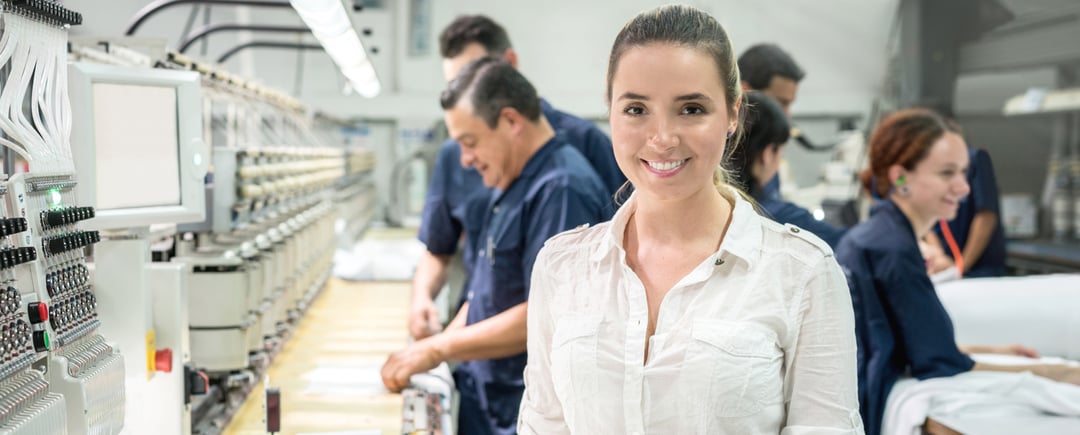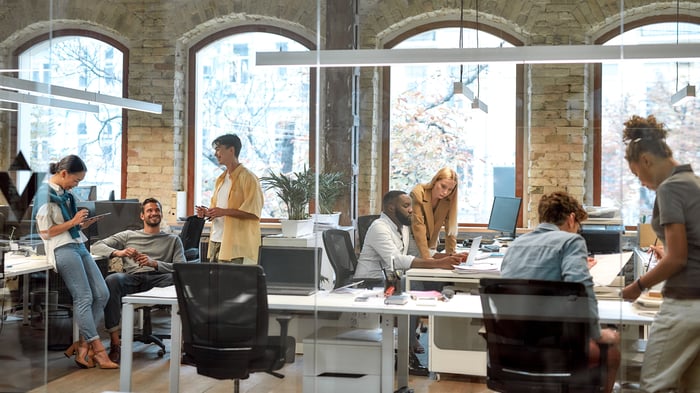As we enter a new era post-pandemic, it’s fair to say that the wants and needs of workers in various industries have changed. As employers, therefore, we need to reconsider our approach to recruiting, developing and maintaining employees, in order to future-proof our workforce. In this blog, we take a look at what this means for the textiles industry.
Recruit — making our industry an attractive place to be
The European Textiles Services Association (ETSA) recently conducted a survey of people outside the textile services industry. ETSA were keen to find out the respondents’ values and motivations regarding a workplace, as well as their awareness and interest in the textiles services industry. The results were telling.
Working in a sustainable industry was a key motivating factor for a high proportion of respondents. We know, however, that the textiles industry is far from being green. Within fashion, for example, there is a 40% waste rate of garments that are never worn.
Develop — creating a workplace that nurtures employees
Across industries worldwide, the pandemic led to a shift in attitudes for workers. As a result of being forced to work from home, or in some cases being let go from their workplaces altogether, many people began to re-evaluate both where and how they work. Indeed, at the recent ETSA conference, the damning statistic was presented that 58% of Europeans are considering changing their jobs this year. This means that employers must adapt new ways of working.
So what does this mean in practice for the workwear industry? Looking at the results of ETSA’s survey, after salary and sustainability, flexibility in the workplace was the next most important driving factor for talent. After such a prolonged period of time where working practices were not ‘normal’ due to the pandemic, we must realise that a new normal is needed. This could mean hybrid arrangements of in-person and from-home working, or flexibility in start and finish hours. By making these adjustments, we can create a more supportive workplace that allows employees to do their best work and develop a better sense of work-life balance. To get more inspiration about how other companies are adapting to their employees’ needs, why not read about Fortune 100’s Best Companies to Work For.
Maintain — seeing a bright future within the workplace
In the midst of what has been dubbed ‘the great resignation,’ we must think long-term: once we have attracted employees, what will make them stay? Of course, as mentioned above, salary is a key motivating factor. More broadly though, many workers place value on being able to see a career development path; not only to earn more money, but to feel that they are progressing and growing within their workplace. This links back to the recruitment stage, and being transparent around career development opportunities. Within the textiles industry, this may mean opportunities for additional training and upskilling, shadowing and mentorship (particularly for younger talent), and where appropriate, opportunities to take on greater responsibilities and leadership roles.
Change starts with listening
At the end of the day, making changes to future-proof the workplace must start with listening. We must listen to the feedback of both our existing employees, and that of our future employee market (by using surveys like ETSA’s). Creating an attractive workplace can be achieved by educating yourself on how your workplace is currently being experienced across all aspects (recruitment, development opportunities, maintain efforts) and reaching out to understand where your workforce wants you to change.
As an employer within the textile industry, we are recognising current trends and are keen to adapt for the future. Therefore we've started the listening part, resulting in incredible insights that we're now using to further build a solid employer brand.
A workplace of value: taking pride in what we do
If we wish to be an industry that our employees can be proud of, we must always place the greatest value on why we do what we do. The protective workwear industry is about keeping people safe and, indeed, saves lives. By embedding this mission at the heart of everything we do, alongside striving for a sustainable, flexible and supportive environment for our workers, we can make the protective clothing industry a workplace our people can be deeply proud of.







